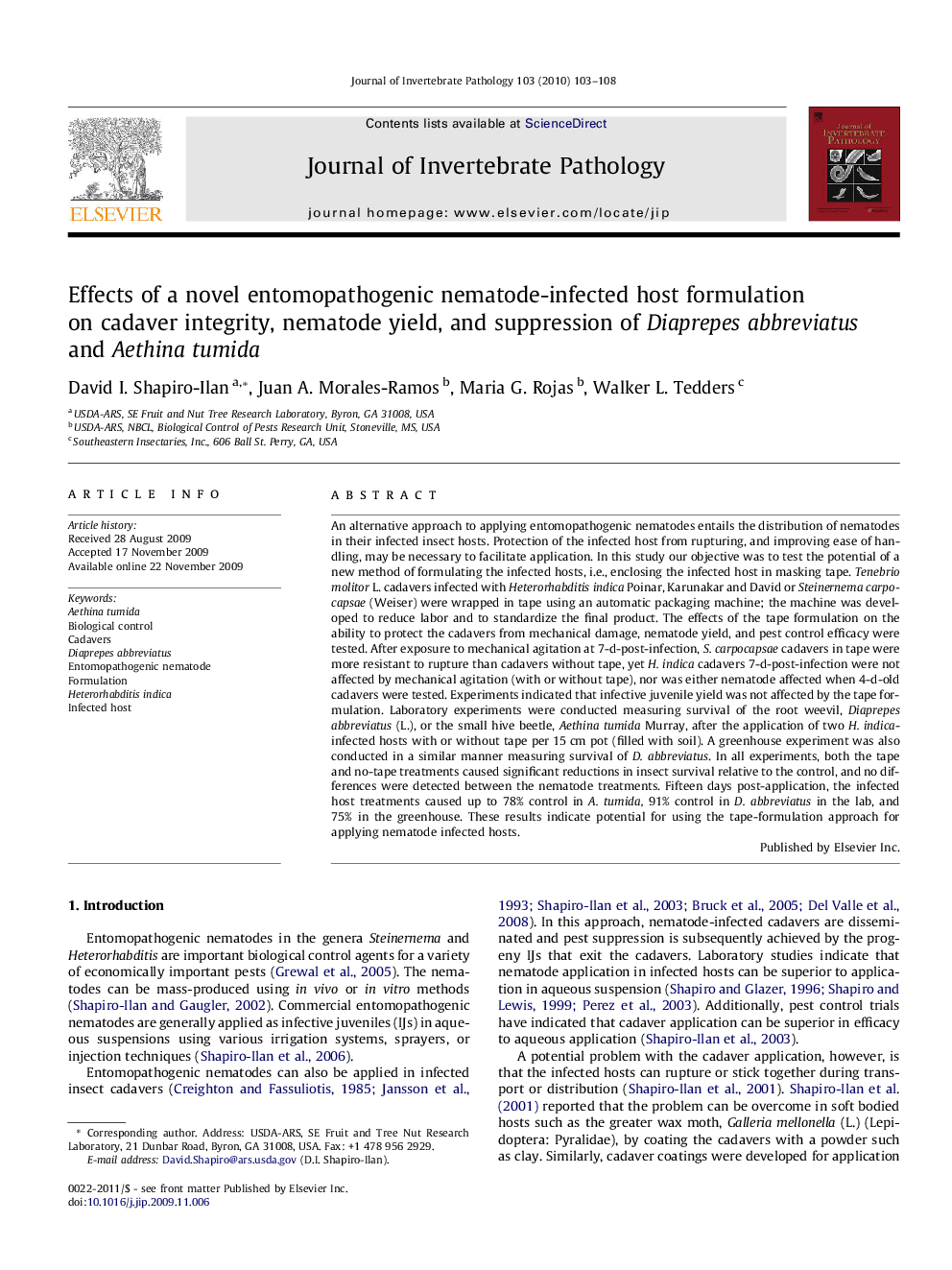| Article ID | Journal | Published Year | Pages | File Type |
|---|---|---|---|---|
| 4558333 | Journal of Invertebrate Pathology | 2010 | 6 Pages |
An alternative approach to applying entomopathogenic nematodes entails the distribution of nematodes in their infected insect hosts. Protection of the infected host from rupturing, and improving ease of handling, may be necessary to facilitate application. In this study our objective was to test the potential of a new method of formulating the infected hosts, i.e., enclosing the infected host in masking tape. Tenebrio molitor L. cadavers infected with Heterorhabditis indica Poinar, Karunakar and David or Steinernema carpocapsae (Weiser) were wrapped in tape using an automatic packaging machine; the machine was developed to reduce labor and to standardize the final product. The effects of the tape formulation on the ability to protect the cadavers from mechanical damage, nematode yield, and pest control efficacy were tested. After exposure to mechanical agitation at 7-d-post-infection, S. carpocapsae cadavers in tape were more resistant to rupture than cadavers without tape, yet H. indica cadavers 7-d-post-infection were not affected by mechanical agitation (with or without tape), nor was either nematode affected when 4-d-old cadavers were tested. Experiments indicated that infective juvenile yield was not affected by the tape formulation. Laboratory experiments were conducted measuring survival of the root weevil, Diaprepes abbreviatus (L.), or the small hive beetle, Aethina tumida Murray, after the application of two H. indica-infected hosts with or without tape per 15 cm pot (filled with soil). A greenhouse experiment was also conducted in a similar manner measuring survival of D. abbreviatus. In all experiments, both the tape and no-tape treatments caused significant reductions in insect survival relative to the control, and no differences were detected between the nematode treatments. Fifteen days post-application, the infected host treatments caused up to 78% control in A. tumida, 91% control in D. abbreviatus in the lab, and 75% in the greenhouse. These results indicate potential for using the tape-formulation approach for applying nematode infected hosts.
